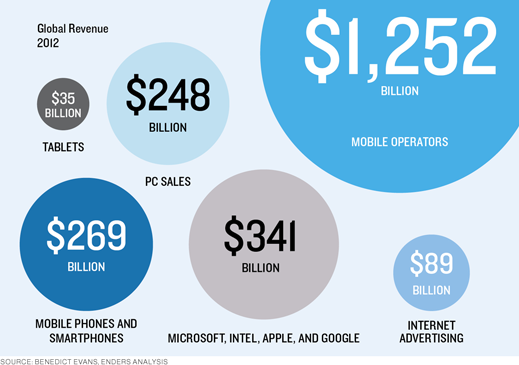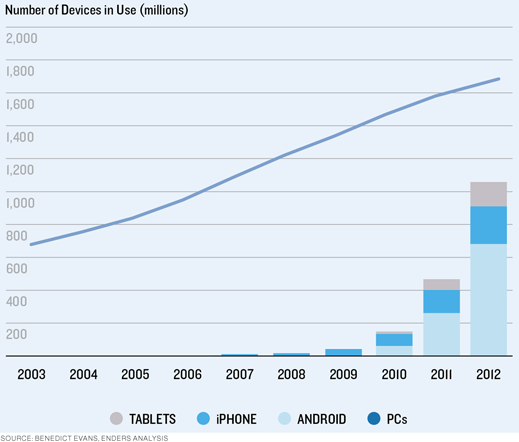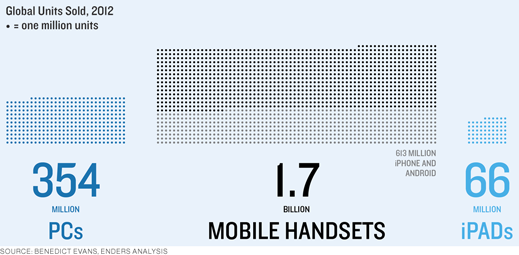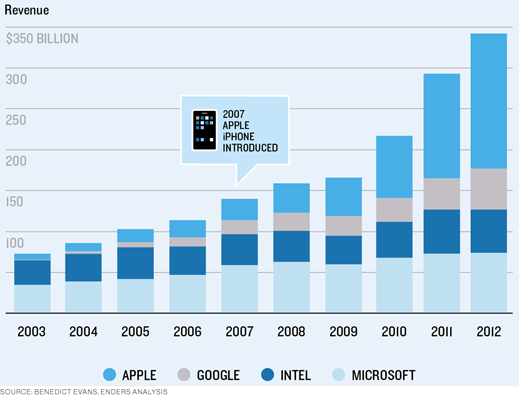Smartphones Are Eating the World
Smartphones have created a bridge between two previously separate industries—wireless networks and personal computing. For Internet firms and device makers, this means access to the world’s largest network of people. As can be seen above, the wireless telephone business is large compared to personal computing. In 2012, the world’s mobile operators did $1.2 trillion in business and served around 3.2 billion people, versus perhaps 1.7 billion people who used PCs to access the Internet. By comparison, the combined revenue of Microsoft, Google, Intel, Apple, and the entire global PC industry was $590 billion. Online advertising, the main driver of the consumer Internet, generated only $89 billion in revenue.



PCs still represent a majority of personal computing devices in use globally. But not for long. As smartphone and tablet sales increase rapidly, they are replacing PCs and Microsoft Windows as the dominant personal-computing paradigm. At right are the number of PCs, tablets, smartphones, and all mobile phone handsets in use, as well as the number of each sold in 2012. Growth in smartphone sales are coming largely at the expense of older-style “feature phones,” as people replace them, typically once every two years. As can be seen, two-thirds of the mobile phone market has yet to convert to smartphones. Close to a billion smartphones will be sold in 2013, while PC sales will gradually decline.

Smartphones have greatly increased the profitability of the mobile phone handset business. The average selling price of all mobile phones rose from about $105 in 2010 to $180 at the end of 2012, largely driven by Apple’s iPhone. In 2012, Apple sold 136 million iPhones for $85 billion, averaging $629 per phone. By comparison, the average selling price of a PC is about $700. With a further $33 billion in revenue from iPads, Apple’s annual revenue now exceeds the combined business of Intel and Microsoft. Sales by other companies of Android smartphones (not shown) reached 480 million units in 2012, generating an estimated $120 billion in revenue at an average selling price of $250.
Keep Reading
Most Popular
Large language models can do jaw-dropping things. But nobody knows exactly why.
And that's a problem. Figuring it out is one of the biggest scientific puzzles of our time and a crucial step towards controlling more powerful future models.
How scientists traced a mysterious covid case back to six toilets
When wastewater surveillance turns into a hunt for a single infected individual, the ethics get tricky.
The problem with plug-in hybrids? Their drivers.
Plug-in hybrids are often sold as a transition to EVs, but new data from Europe shows we’re still underestimating the emissions they produce.
Stay connected
Get the latest updates from
MIT Technology Review
Discover special offers, top stories, upcoming events, and more.